Jews Around the World – Jewish Diversity Puppets
These Jewish diversity puppets are the perfect project for promoting unity! When you’re done, try this aleph bet coloring page puppet too. This post contains affiliate links.
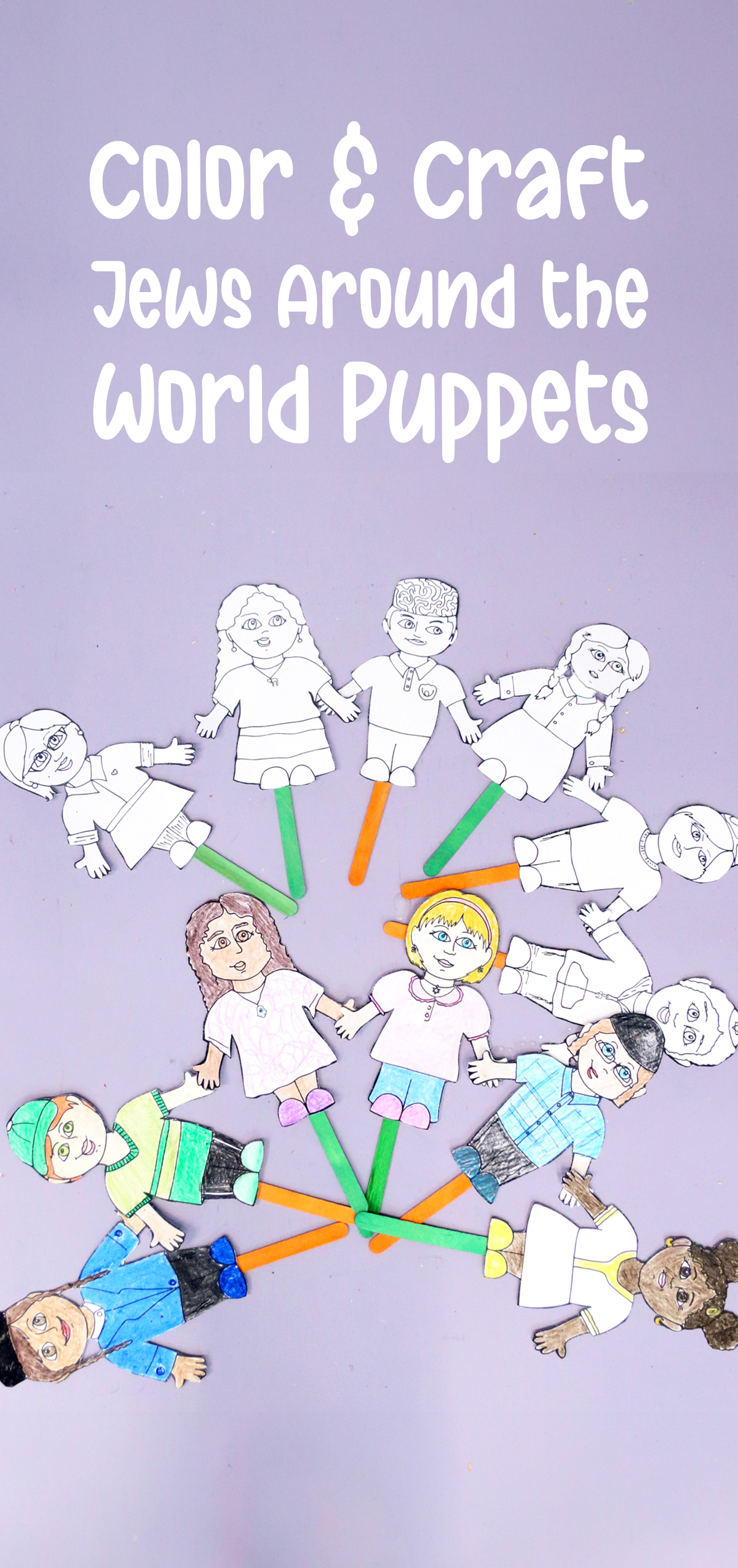
As you walk through the streets of Jerusalem and Tel Aviv, you see one of the most beautiful things: the ingathering of the exiles.
In fact, our people started out as twelve different tribes, and our diversity is beautiful. I hope that if I have any voice in the Jewish world, that I use it to promote unity – achdut. That was the inspiration behind the Jews Around the World Jewish Diversity Puppets.
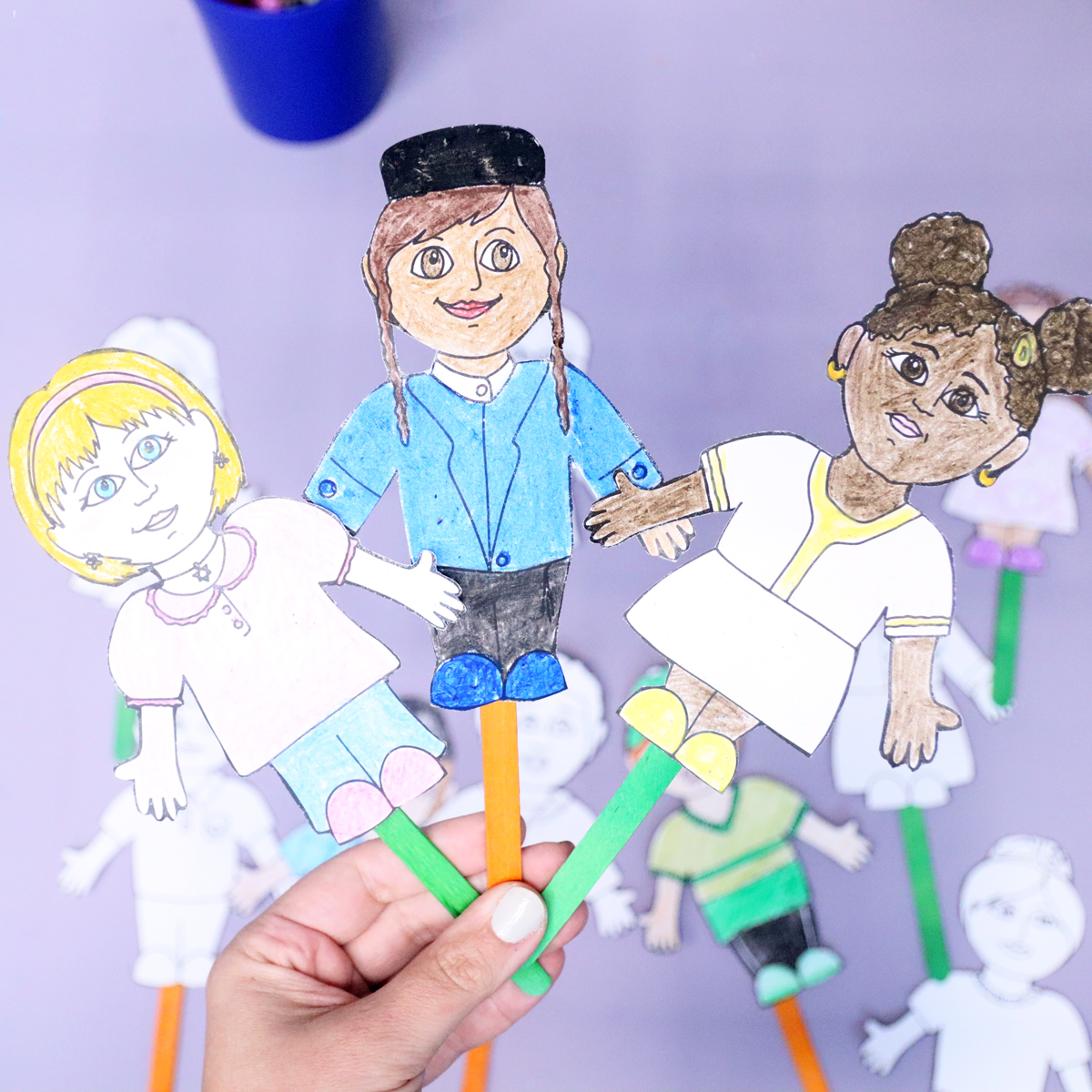

I’m going to share a LOT of background on this subject, including the struggles I had with it as a sort of “disclaimer”, an intro to each character, and some crafting and use tips. So this post has quite an intro – some of what is included in the download, but if you want to skip it, you can just download it here.
For a while, I wanted to create this project: a set of puppets of Jewish kids from around the world. I wanted to create a puppet representing each diaspora. That is, every single one. That’s why this project sat on my to-do list for over five years.
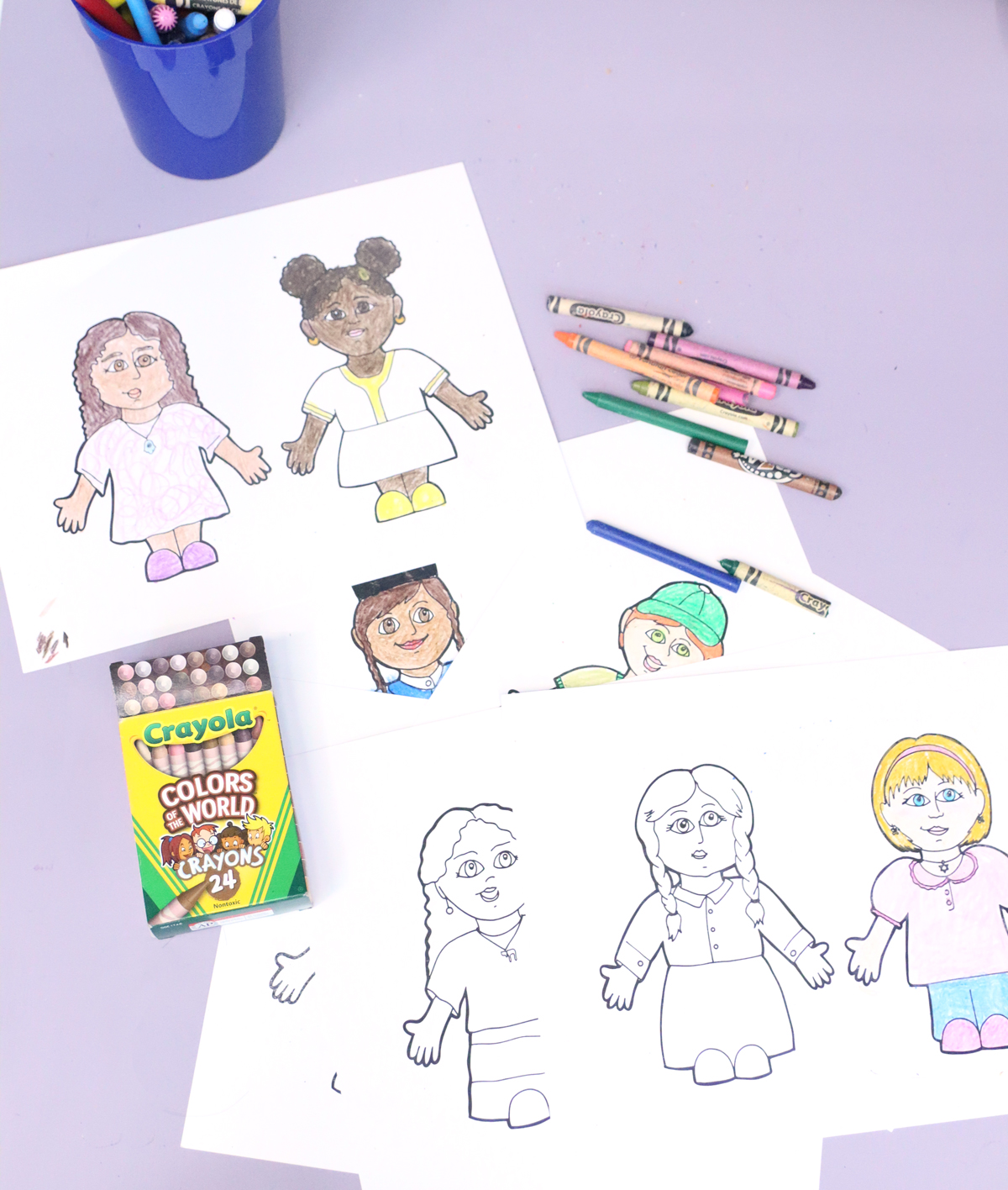
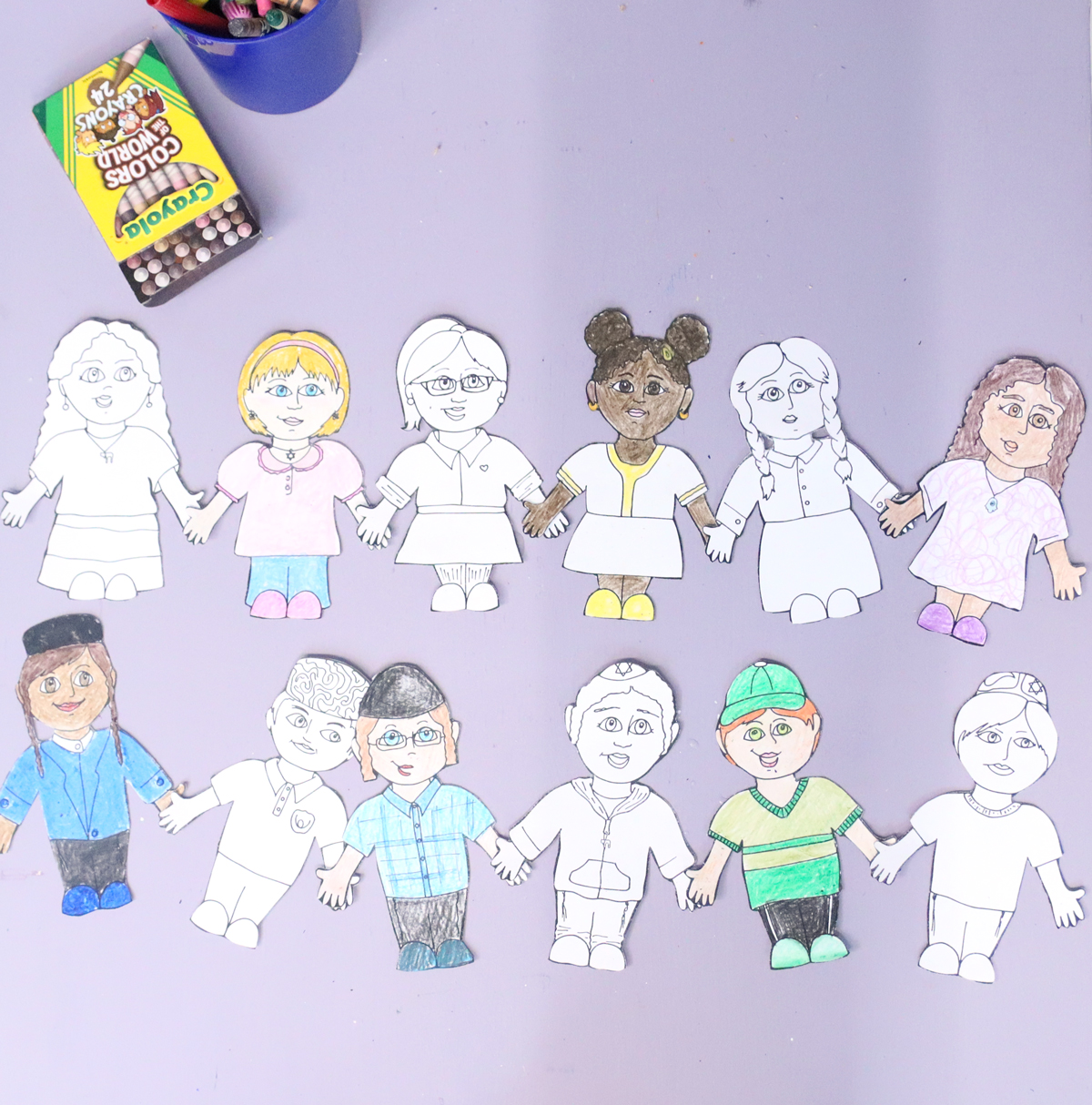
The scope of the project in my mind: make a list of every single Jewish diaspora, and find a way to illustrate puppets for kids to color, with each one representing a different type of Jew. And each one, a boy AND a girl. I realized that I needed to make the project more realistic in scope.
So I whittled it down to a broad representation of various Jews from different backgrounds – both hashkafic (religious) and diasporic. Each one is drawn to be cute, friendly, and relatable, with arms outstretched so that they can hold hands.
Approaching the Jewish Diversity Puppets with care
One of the big challenges with a project like this is being sensitive to the feelings of kids. The whole goal is to help all kids feel included. The last thing I want is to “other” them. Or leave out a community.
And that’s why I kept it a bit more broad. You can “adapt” each puppet to different communities as needed. I based some on different ways of observance, some on area of diaspora, and you can mix and match those based on the approach you need.
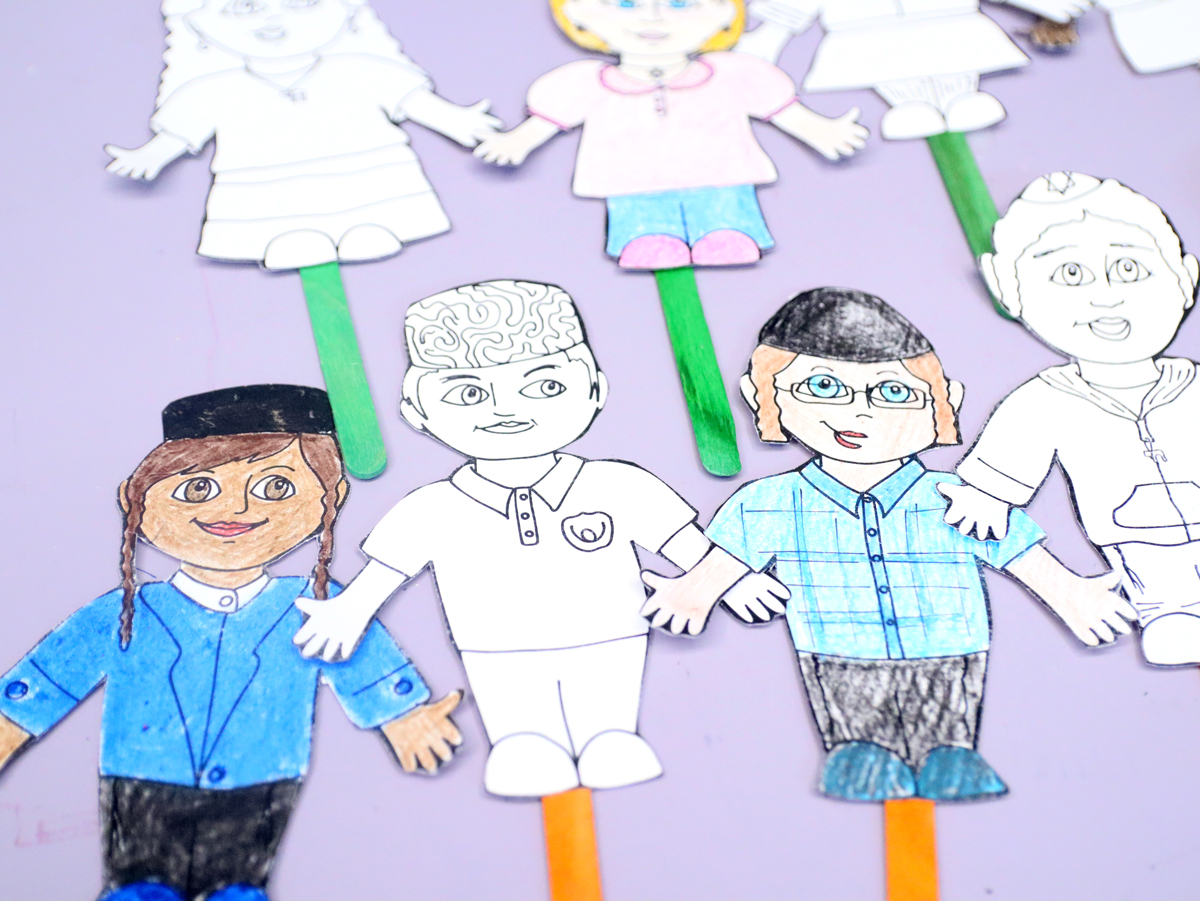
As far as making them feel othered: again, I tried to keep things as normal as possible. I avoided caricaturizing them, and while I did largely base my drawings on researched images – including styes of dress – I tried to use just slight influences into what they’re wearing.
There was no way to do this perfectly. For example, most Teimani (Yemenite) Jewish kids in Israel will be wearing a t-shirt and jeans – but in the original diaspora, as they came, they were often wearing things like mandarin collars and slightly more formal wear like blazers.
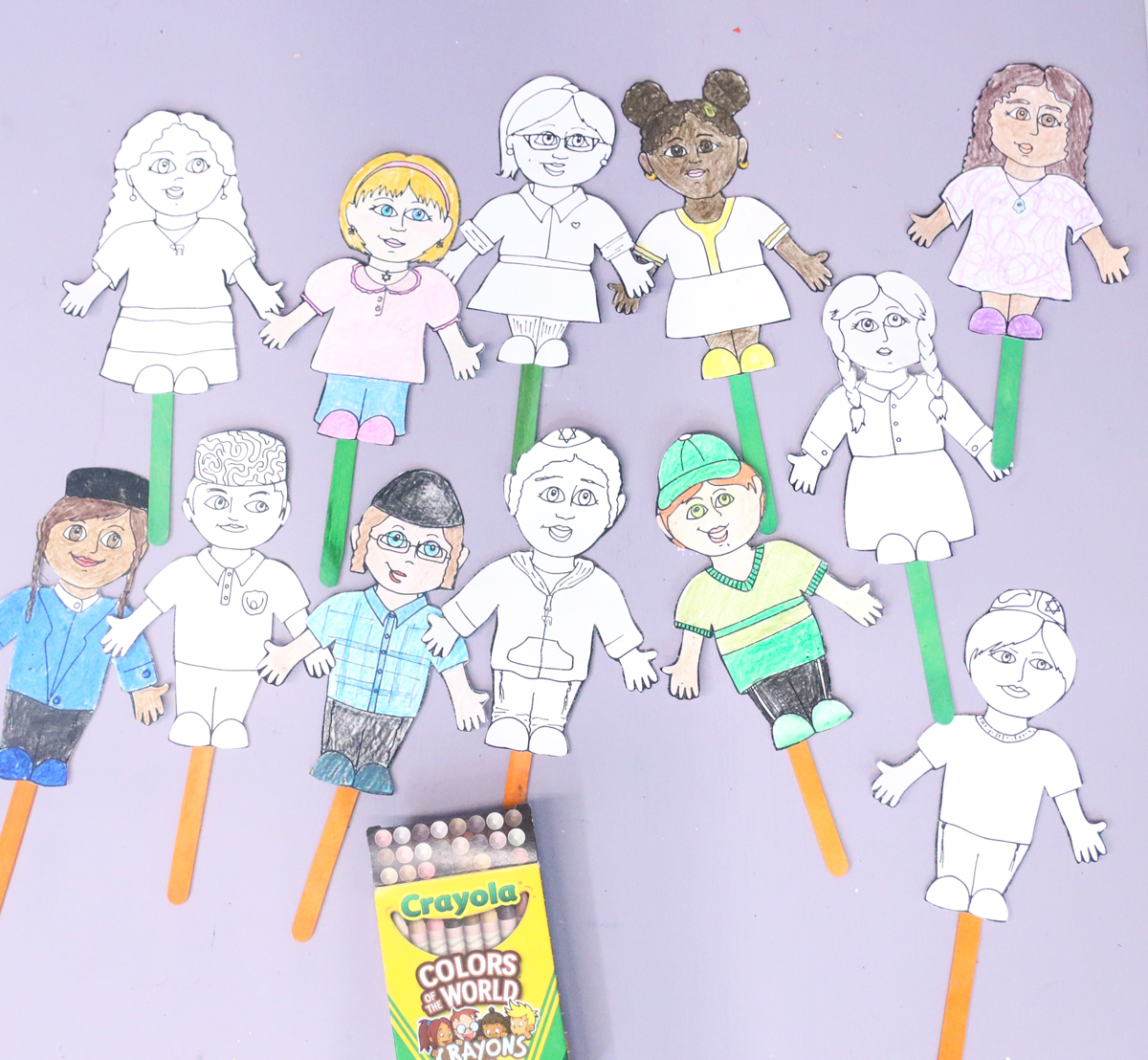
Another issue I faced was keeping it hashkafically appropriate for (almost) everyone. While I truly wanted to present the idea that there are many ways to be a good Jew in the puppets, I also didn’t want it to be inappropriate for large swaths of institutions. And I don’t see a Bais Yaakov school bringing this in as a unity project with a girl wearing shorts – they might view it as an “endorsement”.
So I tried to keep it ambiguous and neutral.
The truth is, I also offer the puppets as individual images in the download, so you can just print what you want. It would just be a shame if a group felt they couldn’t use this beautiful unity- encouraging project or had to leave one off because of a small detail like dress.
So yes, I did put one girl in pants, to broaden representation a bit, but hopefully this project overwhelmingly resonates.
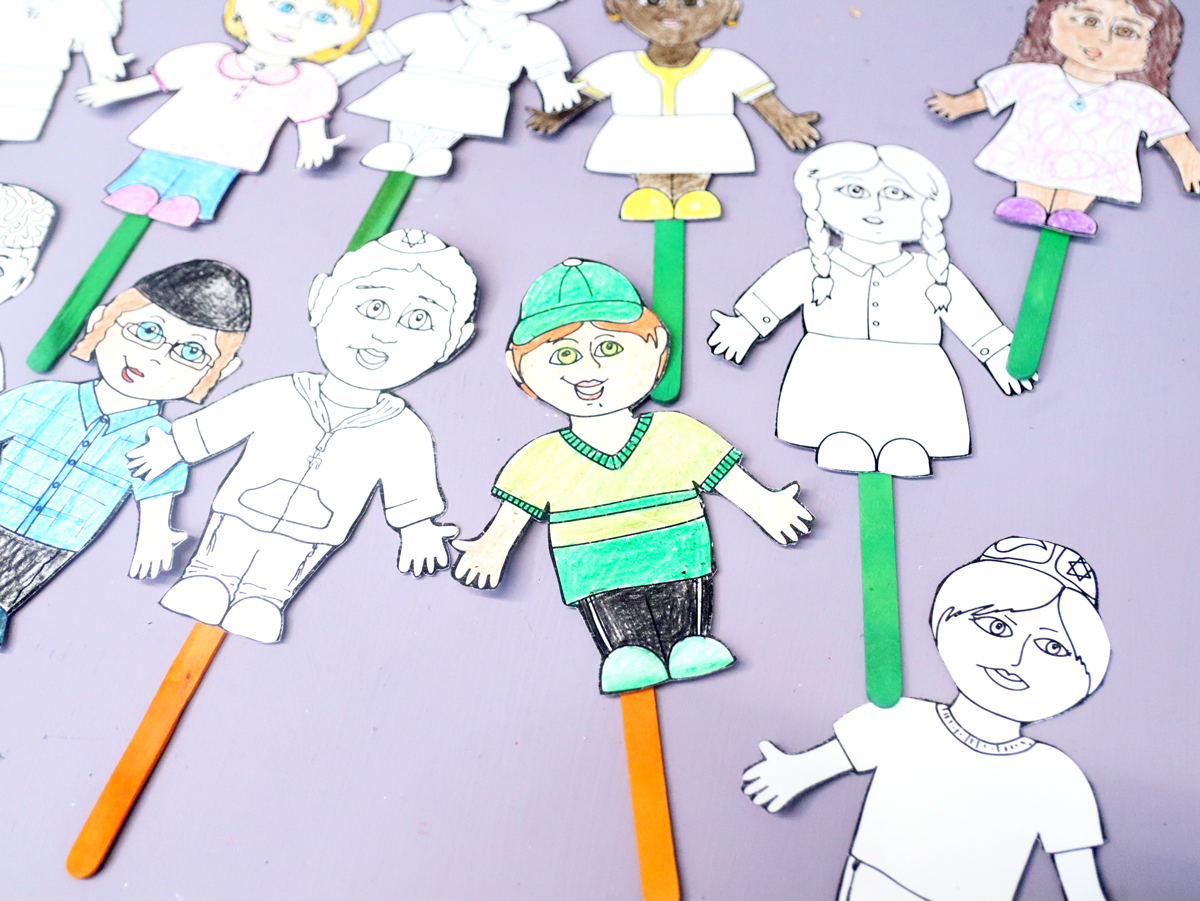
Understand that a LOT of thought went into this. I wanted it to appeal to as many Jewish communities as possible – the goal IS unity, we are one. And yet, most of Jewish diversity visuals for kids comes through PJ Library, which, while a beautiful initiative, is not always hashkafically-appropriate for right wing homes. If I’m just going to create another project along those lines, what am I really accomplishing?
Download the Jewish Diversity Puppets
A project like this takes an incredible amount of time and research and while I would love to offer everything for free, the Jewish crafting/education niche is too tight to be only ad-supported.
These Jewish Diversity puppets are therefore available for a few bucks in my shop, as well as on Etsy and on TpT. Purchasing premium products from me enables me to keep doing what I do, to give more focus to my Jewish blog, creating authentically Jewish resources for homes, educators, and parents.
About the Jewish Diversity Puppets
Here’s some background on assembly instructions, ways to use them in the classroom or outside, and an intro to them all. Please note: this info is all in your download instructions file!
Meet them here
I did NOT give them names 🙂 I’m just sharing my inspiration behind each. I don’t necessarily encourage outlining all the details to kids – let it be natural and not stereotyping. I’m just sharing it with you from the grown-up perspective.
I WILL share fashion influences as well, and really fashion is universal. Other groups might wear it. But by looking at popular or tradition-based styles, I just got a broad range of ways to dress in as well!

Again, this was very touchy to draw, hard without stereotyping, but I want it to feel real and representative. So I toed the line and hope I did a good job.
There are six boys and six girls – I thought twelve was the perfect number because we have twelve tribes! (And they are NOT a representation of the specific twelve tribes.)
- Mizrahi/Sephardi girl – Curly/wavy hair, a loose, flowy dress, and a hamsa necklace.
- Ethiopian girl- Two buns, high cheekbones (I tried) and a slight touch of tradition on the dress.
- Haredi/Yerushalmi girl- I tried to go for the very right-wing segments of Ashkenazi Jewish society here, with a blouse, a long skirt, and even braids. She can also be colored like the Yemenite diaspora (which had strong Satmar influence in later years).
- Russian/former Soviet girl – This was a hard one! I went with straight hair for this one, and a proud star of David necklace!
- Religious Zionist (Dati Leumi) – This girl was inspired by the Gush Katif exilees. I felt that they especially needed representation now!!
- An American-style Bais Yaakov girl – As you can see, there’s no real criteria here for representation! I just tried to get as many different vibes as I can. She has a ponytail, and a more casual blouse with sleeves rolled up, and a shorter skirt.
- Yemenite Boy – With long peyot, and slightly more formal dress.
- Bukharan Boy – With a Bukharan style kippah.
- Persian boy – With a Persian-style kippah and thick hair.
- Hassidic boy – Think Boro Park! He wears a collared shirt and a large kippah with sidecurls.
- All-American boy – This boy might be secular, he might be religious, but he’s definitely a Jewish American. He wears a baseball cap, t-shirt, and athletic pants.
- Israeli boy – With a knit kippah and casual dress, he can belong to any non-Charedi religious element of Israeli society.
As you can see, it’s not a clear subdivision. I did this intentionally. The Ethiopian girl might be religious, she might not. The Bais Yaakov girl might be Ashkenazi or Sephardi. And the Israeli boy can be Ethiopian, a redhead, or whatever you want.
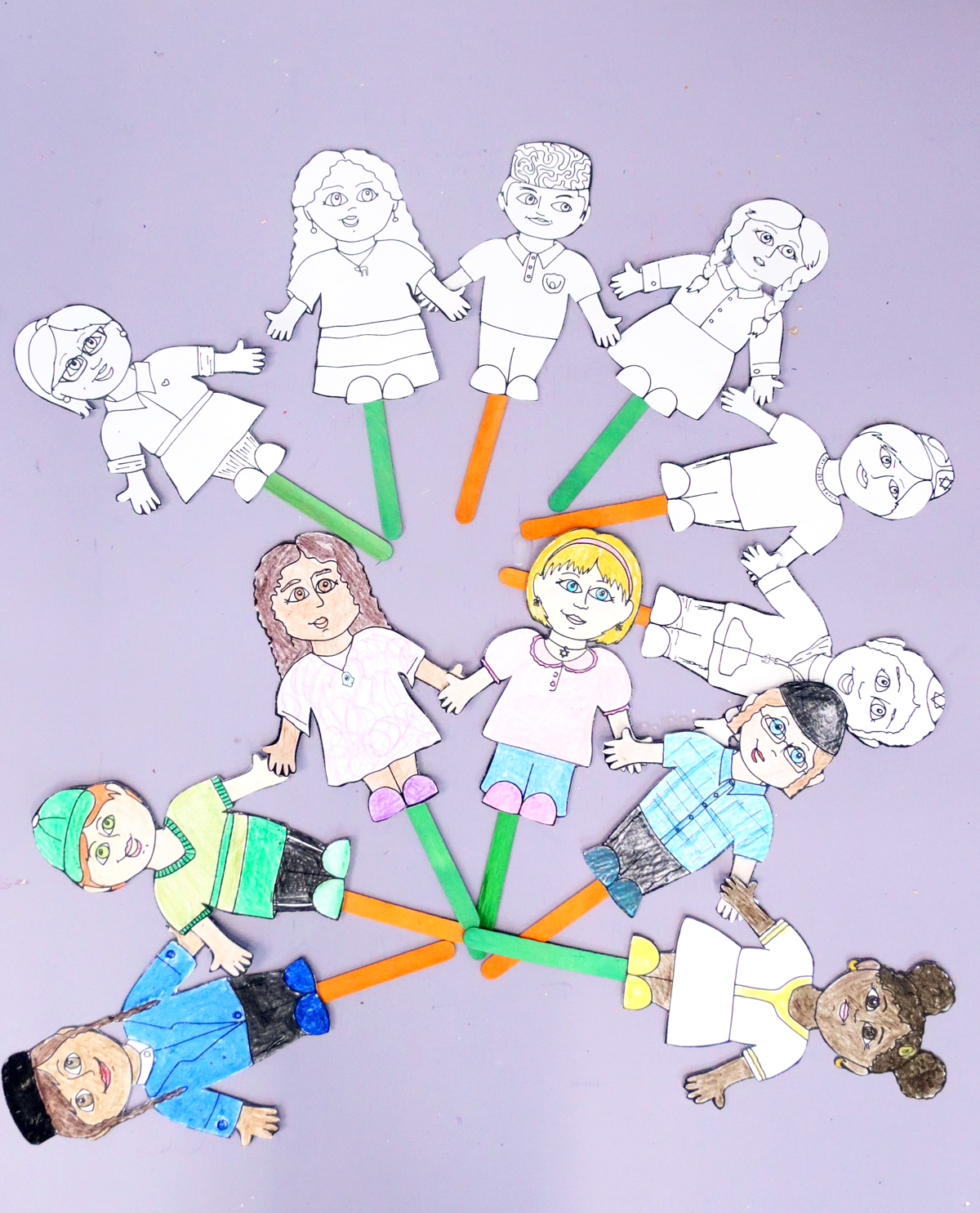
While I do hope to offer a colorized version of this project eventually, for now it’s a color-in craft!
Fun ways to use them
I had in mind different ways to use them both in the classroom and at home.
First of all, your files come in two formats: PDF and PNG.
The PDF files are puppet-sized, two to a page, and easy to just hit “print on. The PNG files are much more flexible – you can use them to format whichever size you want, print full page, print just the ones you want to use, etc.
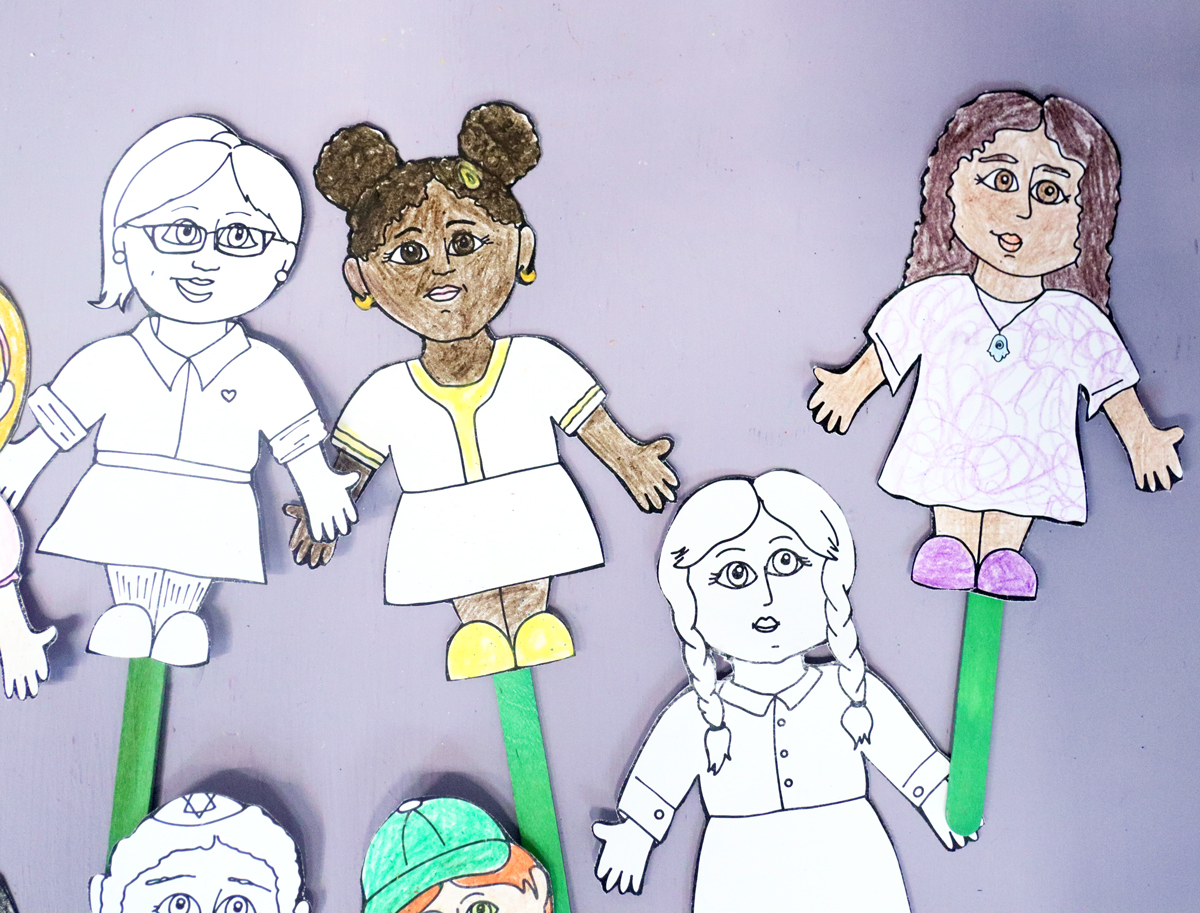
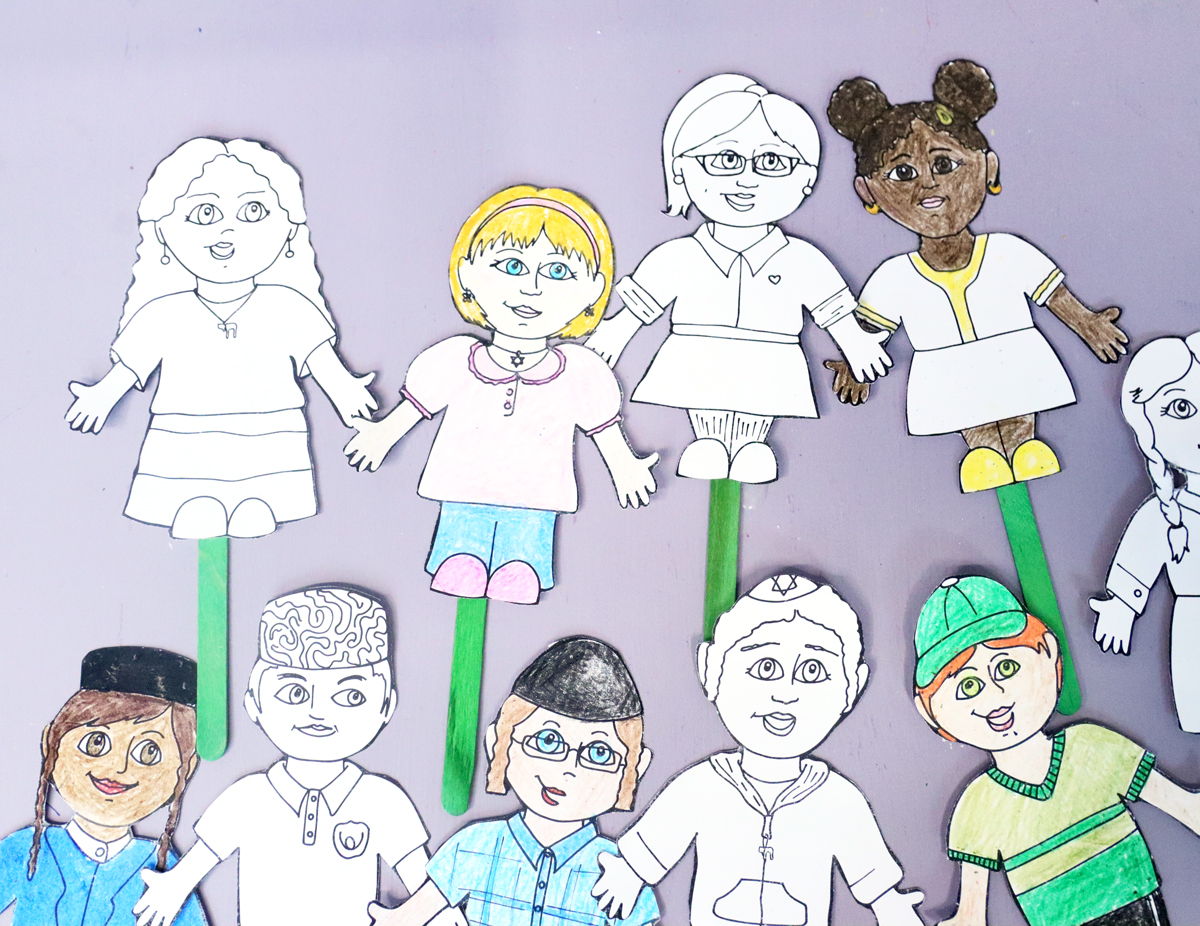
Here are some uses:
- Print them as large as you can and use them as a bulletin board in the classroom or throughout a school hallway.
- Instead of adding sticks, let them hold hands.
- You can laminate these after coloring for longer-lasting puppets
- Use them as paper toys or to narrate stories.
- Use them as visual cues for teaching holidays, so that kids can see all types of Jews celebrating the way they do.
- Use them as a unity project for Lag Ba’omer/sefirat Ha’omer or the Three Weeks/Tish’ah B’av
Assembly Instructions
To assemble these you’ll need:
- Crayons, markers – make sure to get a skin tone set as well, such as Crayola’s Color of the World crayons that I used in my staged photos
- The puppets printed on cardstock (download them here if you haven’t yet)
- Scissors
- Craft sticks
- Glue or double sided tape.
Process:
1. Color the puppets.
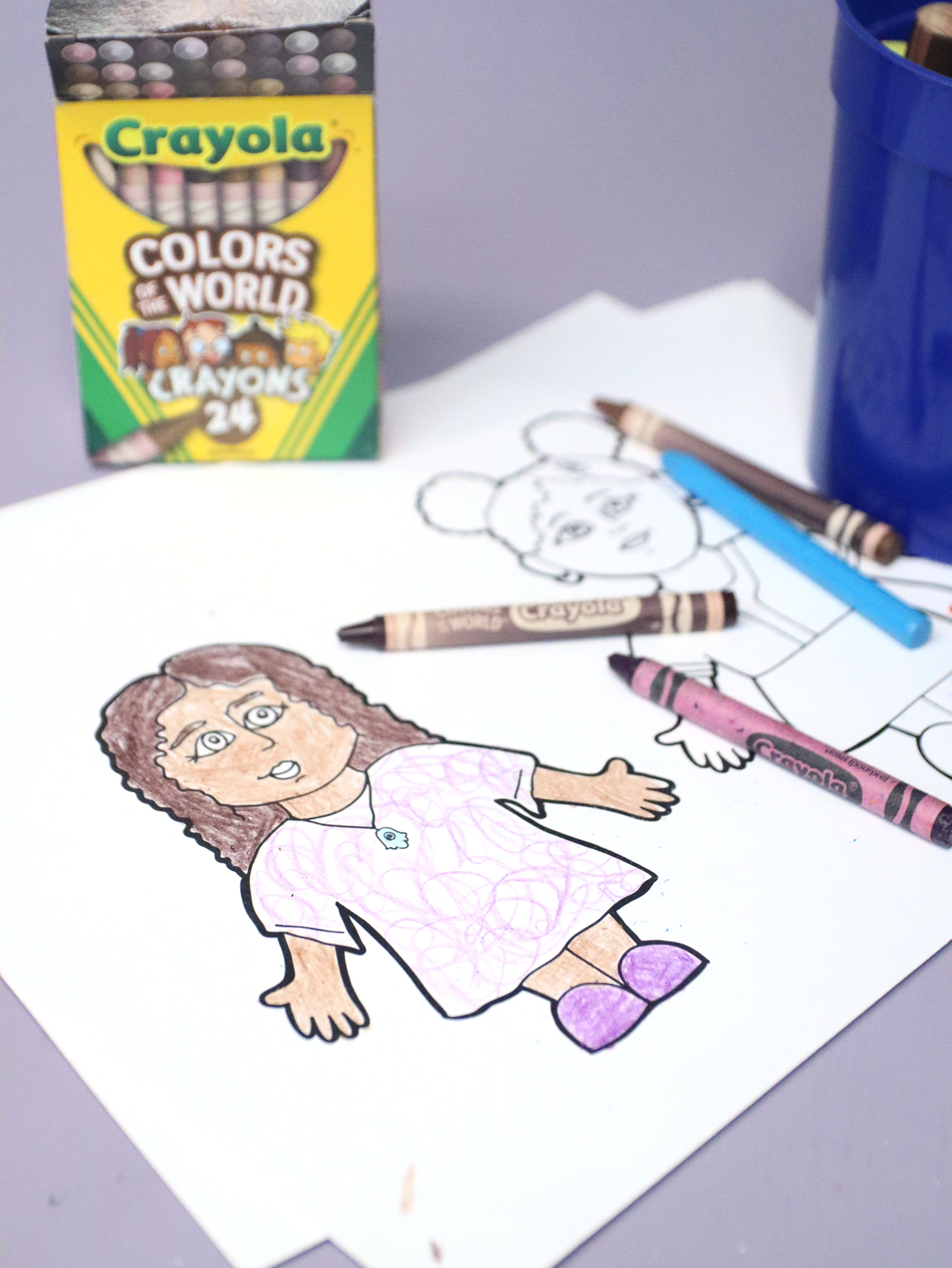
2. Cut them out.
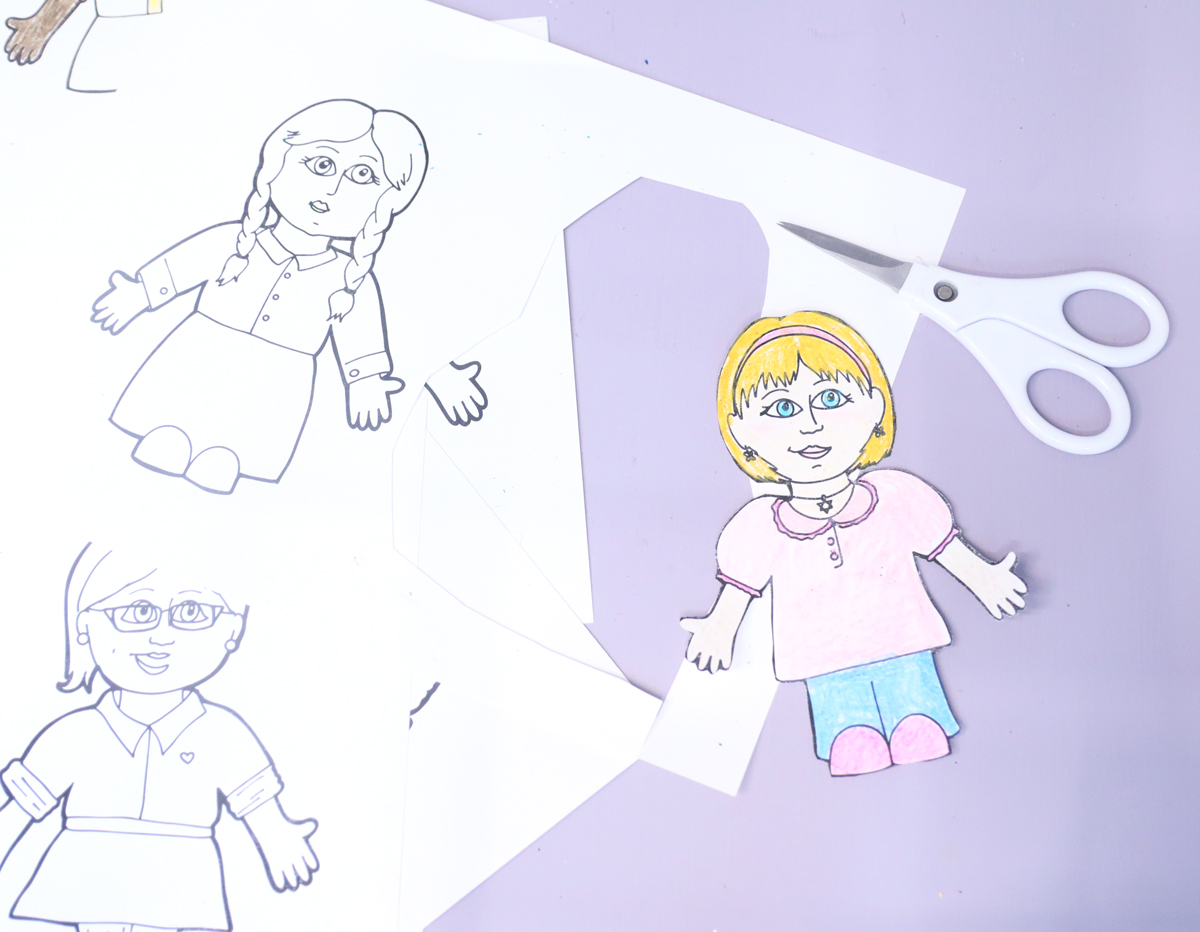
3. Glue or tape a craft stick to the back.
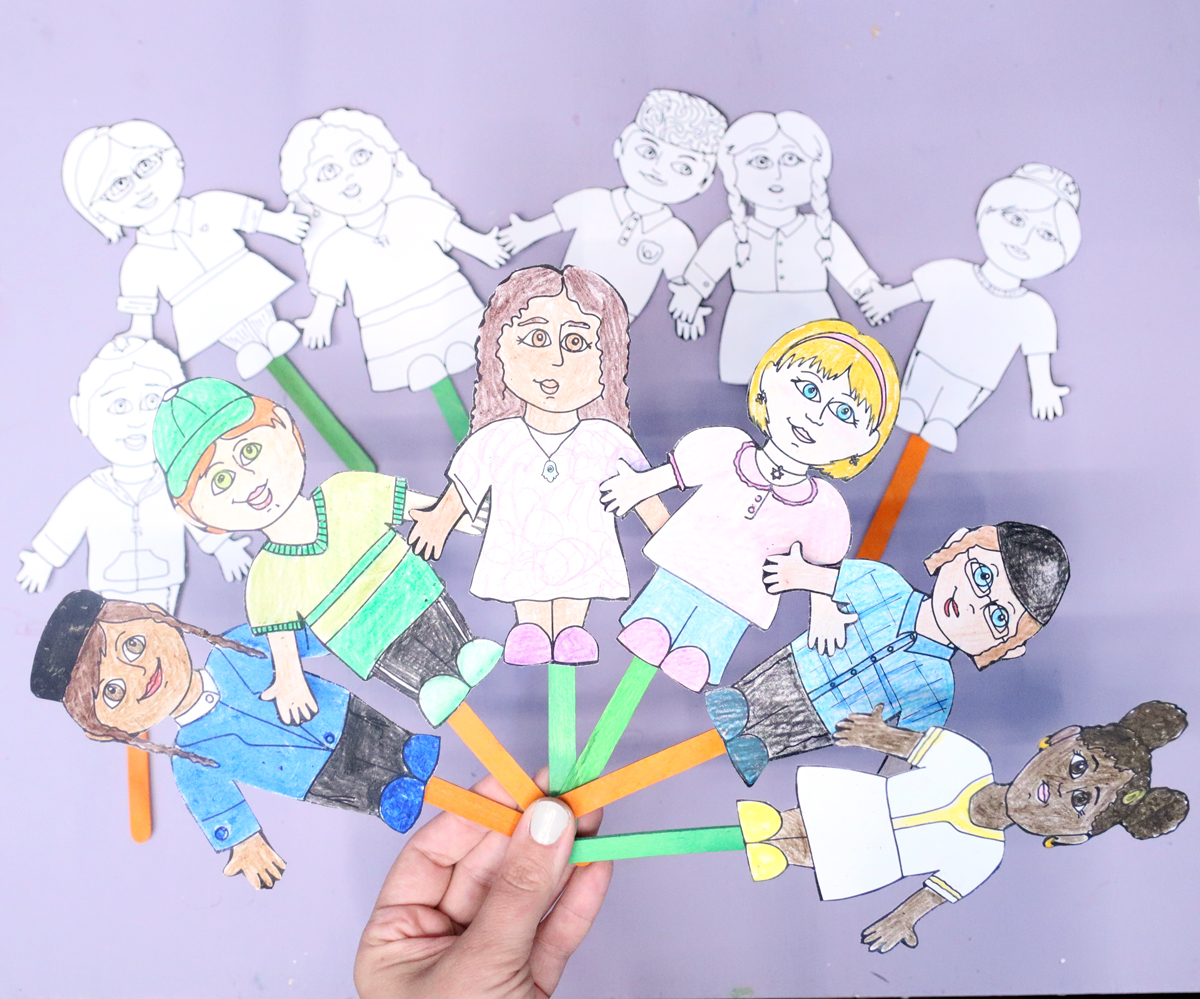
That’s it! They’re ready to play with!
If you haven’t yet, you can download these Jewish diversity puppets here!
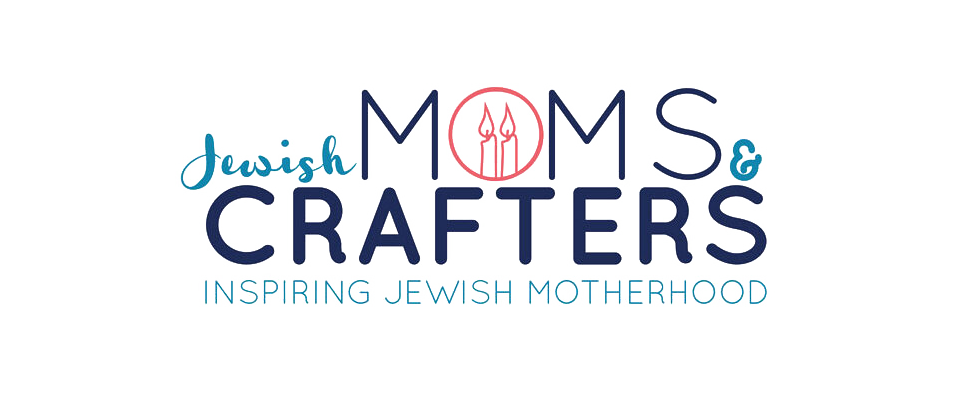

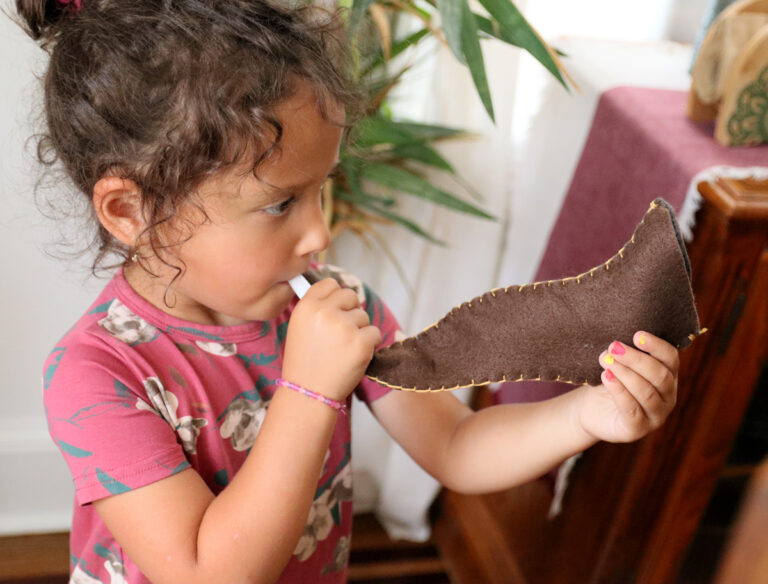
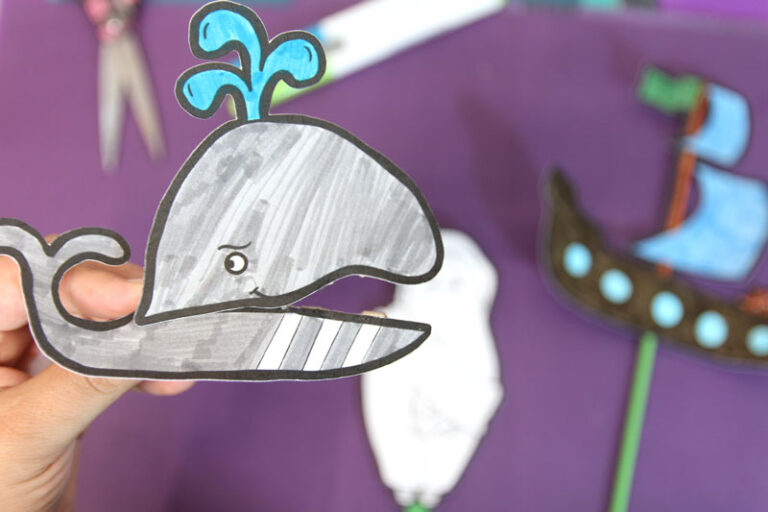
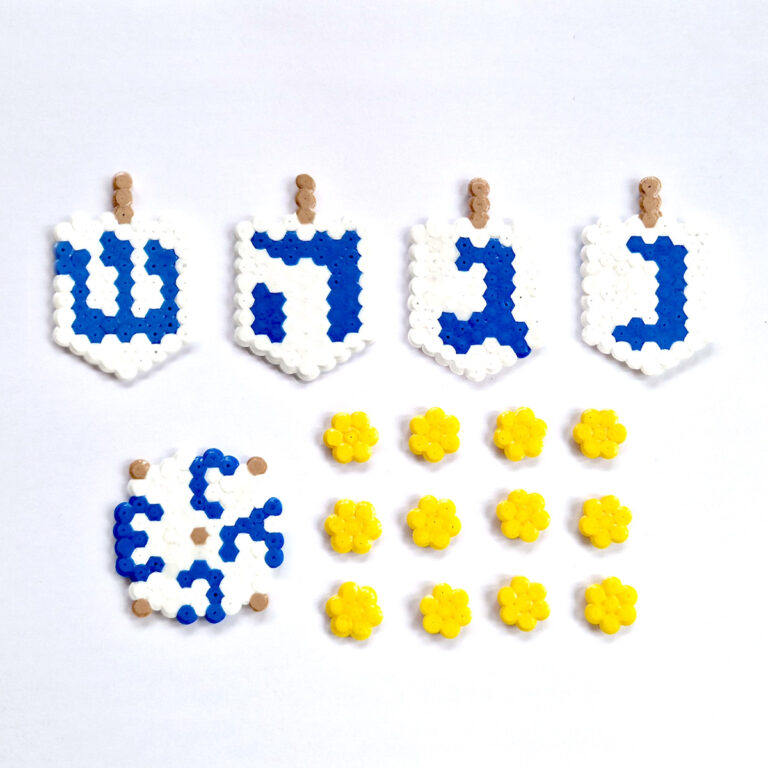
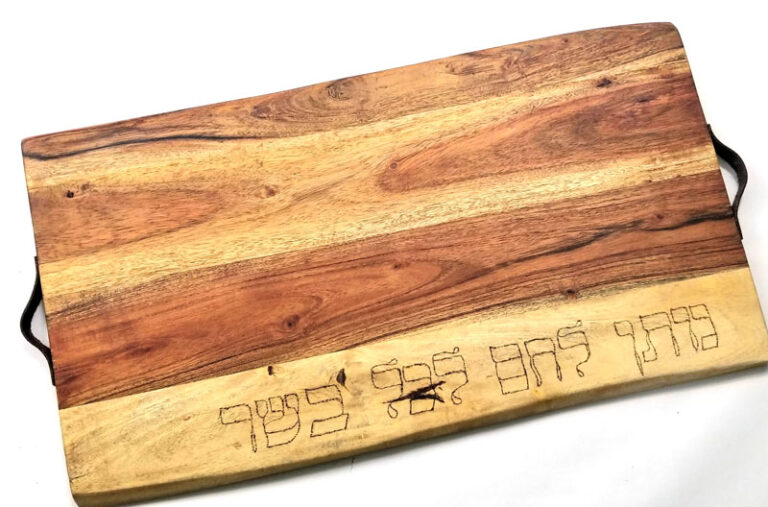
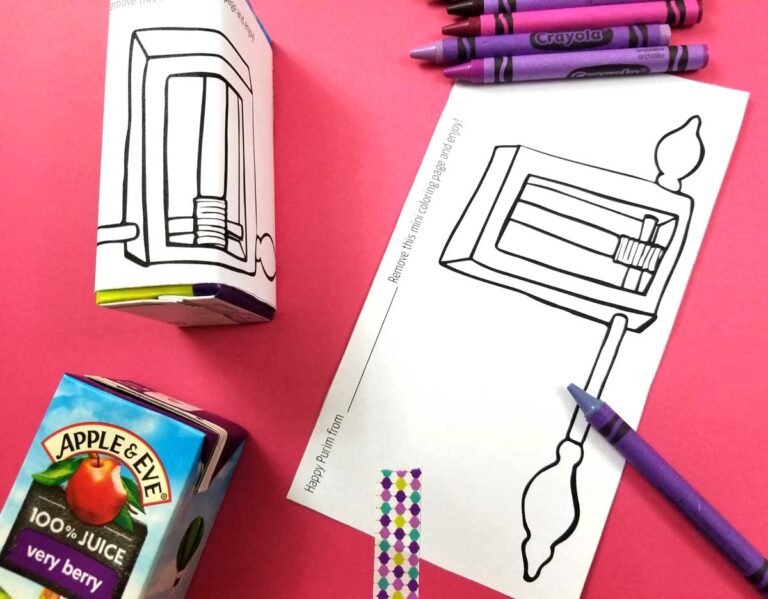
Wow! I appreciate all the thought and effort you’ve put into this beautiful project! These puppets adorably embody the achdus we strive for…
Your comment about the diversity portrayed in other venues rings true – we as a JPF (just plain frum) family were apparently too diverse to feel comfortably included in their content. This feels just right!
Somehow I missed this comment – thank you! I relate to “JPF” – never heard that before!
Oh wow – as a mother of 3 adorable Brown Jewish boys, I love this!
I’m so happy it resonated <3